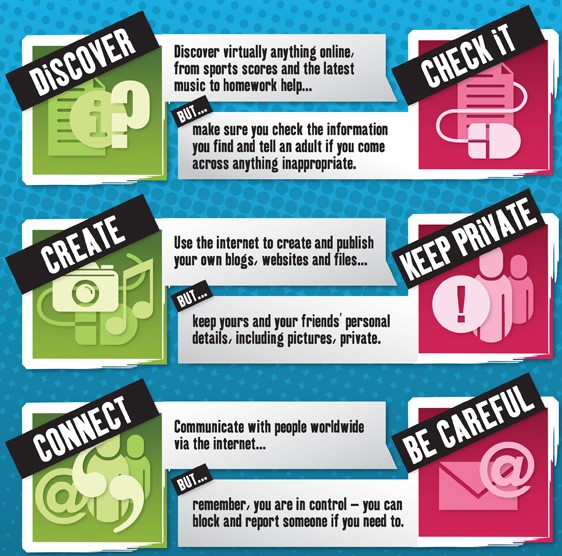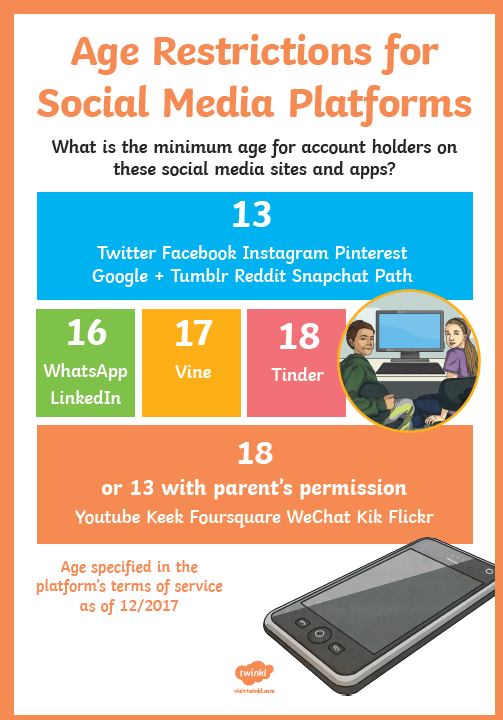Staying Safe
Online Safety
It’s important to remember that the legal age to have an account on most social media is 13. This includes; Instagram, Facebook, Whatsapp YouTube, TikTok and Snapchat.
Being online is an important part of children and young people’s lives. Social media, online games, websites and apps can be accessed through mobile phones, computers, laptops, iPads and tablets – all of which form a part of children and young people’s online world. The internet and online technology provide new opportunities for young people’s learning and growth, but it can also expose them to new types of risks.
What is it?
E-safety is about the protection of children whilst they are using the internet and digital technologies. This includes: risk-taking and inappropriate behaviour by children and young people; risks and inappropriate behaviour by others to children and young people; illegal activity.
At school
At Forest Gate Academy E-safety is an integral part of children’s education and is embedded in their learning at school. As part of your child’s curriculum and development of computer skills, we provide access to the internet only in teacher supervised lessons. At the start of the school year, each class discuss how we can stay safe online and the dangers we may face on the internet. During the first unit each child completes an internet safety unit of work. During the unit of work the children are made aware of the nature of the possible threats that they could encounter while engaging in activity through the internet. The children are taught ways in how they can stay safe online. By teaching the children how to stay safe online we can help to prevent and mitigate the risks that are involved with using digital technologies.
At home
As a parent or carer you play a key role in helping your child to stay safe online. You don’t need to be an expert on the internet to help keep your child safe online. There are many ways that you can support your child to have a safer online experience and build up their resilience to get the best out of the digital world as they grow.
Explore together
Talk to your child about what the internet is and explore it together so you can show them all the great fun and educational things they can do.
Be involved
Encourage them to use devices in a communal area like the lounge or kitchen so you can keep an eye on how they’re using the internet and also share in their enjoyment.
Put yourself in control
Install parental controls on your home broadband. Most Internet-enabled devices also allow you to set parental controls so you can manage screen time.
Use passwords
Keep your devices out of reach and set passwords on all your internet-enabled devices and don’t share them. Then you’ll know when and where your child is accessing the internet. You can also make sure they’re not making additional purchases when they’re playing games or using apps.
Set boundaries
It’s never too early to start setting boundaries. Set some rules about how long your child can spend online.
Talk to siblings
It’s also a good idea to talk to any older children about what they’re doing online and what they show to younger children. Encourage them to be responsible and help keep their younger siblings safe.
Check if it’s suitable
The age ratings that come with games, apps, films and social networks are a good guide to whether they’re suitable for your child. For example, the minimum age limit is 13 for several social networking sites, including Facebook and Instagram.
Use airplane mode
Use airplane mode on your devices when your child is using them so they can’t make any unapproved purchases or interact with anyone online without your knowledge.
Screen time
At home children should have a balanced use of screen time. This can have key benefits to help them learn, explore and interact with the world around them.
Cyber Bullying
The Department for Education states that “Cyberbullying is bullying that takes place using technology. Whether on social media sites, through a mobile phone, or gaming sites, the effects can be devastating for the young person involved. There are ways to help prevent a child from being cyberbullied and to help them cope and stop the bullying if it does happen.
Parents and carers need to be aware that most children have been involved in cyberbullying in some way, either as a victim, perpetrator, or bystander. By its very nature, cyberbullying tends to involve a number of online bystanders and can quickly spiral out of control. Parents and carers have a challenging job. They need to know what their children are doing online and also help them to do it in a safe way. With technology changing on a day-to-day basis, the best way to stay informed is for parents to be involved.”
We ask that you monitor your child’s usage on these devices and be aware that there are age limits for social media platforms, all of which being above Primary age.
Signs of E bullying
Organisations for support with Cyber Bullying

